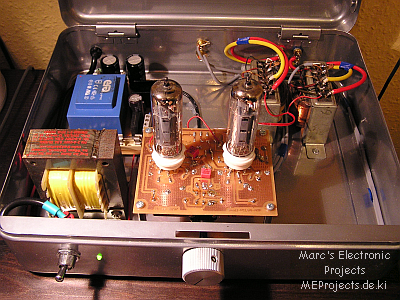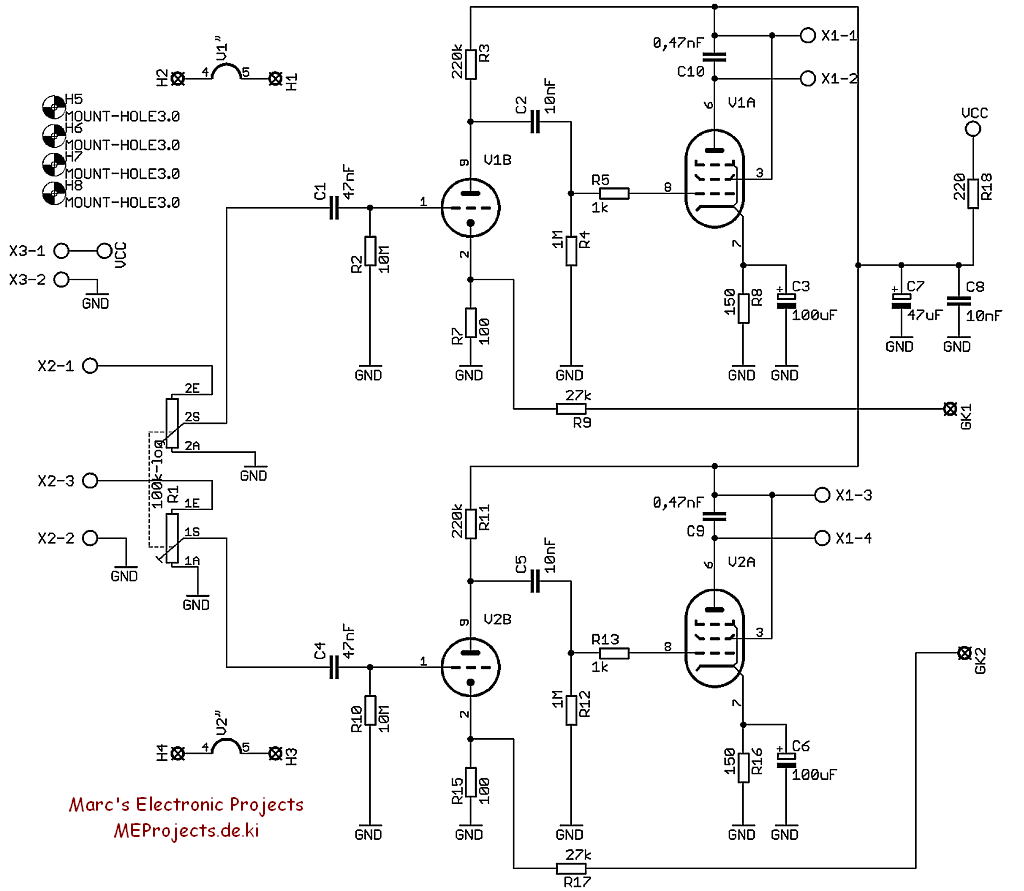
Caution: High Voltage!!!
A small class-A PCL86 Tube Amp in a cash-box
I always loved that particular glow of tubes ever since I looked into the back of a television set when I was small.
When I started off with electronics I started with tubes and I am not that old as you may expect me to be.
But this fascinating something of glowing tubes just puts me into a sort of romantic mood.
So I am a little bit retro.
I never liked those plastic active PC-speakers so I got myself some cheap bookshelf speakers and started to design a tube amplifier.
In my basement I still had a few EL84, PL84, PCL86 pentodes and some ECC82 and ECC83 triodes and two pairs of output transformers from the “Bay”.
I thought of something not too big, just to get my MP3s a bit louder than the PC sound-card would be able to produce on my headphones but with regular speakers.
So I finally decided to use the PCL86, a triode and a pentode in one glass tube.
The heating current is fine with 14V and I could expect an output of roughly 4W when designed as a single ended class-A amplifier.
My output transformers were class-A anyway and so it should be a class-A amp.

The PCL86 tube is known to be not very stable. In fact it starts to oscillate quite easily.
But if the output is bridged by a small capacitor, this tube can be managed quite well.
X1-1 and X1-2 are the connecting pints for the first output transformer and
X1-3 and X1-4 for the second.
X2-1 and X2-2 are the line inputs and X2-3 is the overall ground.
X3-1 and X3-2 are the high voltage inputs.
With GK1 and GK2 there is the possibility to create a feedback from the LOW-side of the output transformer to the triode.
In case oscillation appears try increasing the value of the capacitors C9 and C10.

The power supply is nothing special either:
PCL86_Powersupply Click the picture for a large view
What’s not in the power supply schematic is another transformer for the high voltage anode current which would be a 230V to 230V type.
Switching on the power, 230V goes into X1 and X2 and right into the transformer TR1 for the heating current.
Since the triode and the pentode share the same heating current it is advisable to have a “clean” stable voltage to avoid unnecessary hum.
That is where the line regulator LM317 comes in.
A LED indicates that the amp is powered up.
X3 and X4 is the bypass of X1 and X2 which is the input to the high voltage transformer.
X5 and X5 is the output of the high voltage transformer.
Here again is a rectifier and some low-pass filters in order to get a clean supply voltage
for the anodes.
Please keep in mind that 230V AC turns into 325V DC once rectified.
There is a minimal hum (if you listen closely), but that’s Ok for a single ended class A amplifier.
Even connected to my “good” speakers and to a HIFI CD-Player this small amp performs very well.
This small amplifier is certainly no match in contrast to modern amplifiers, but as I said:
I am a little bit retro!
Please be very careful, when you are working with high voltages!!! I do not feel responsible for you ruining your health!
